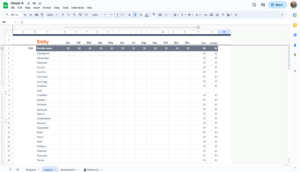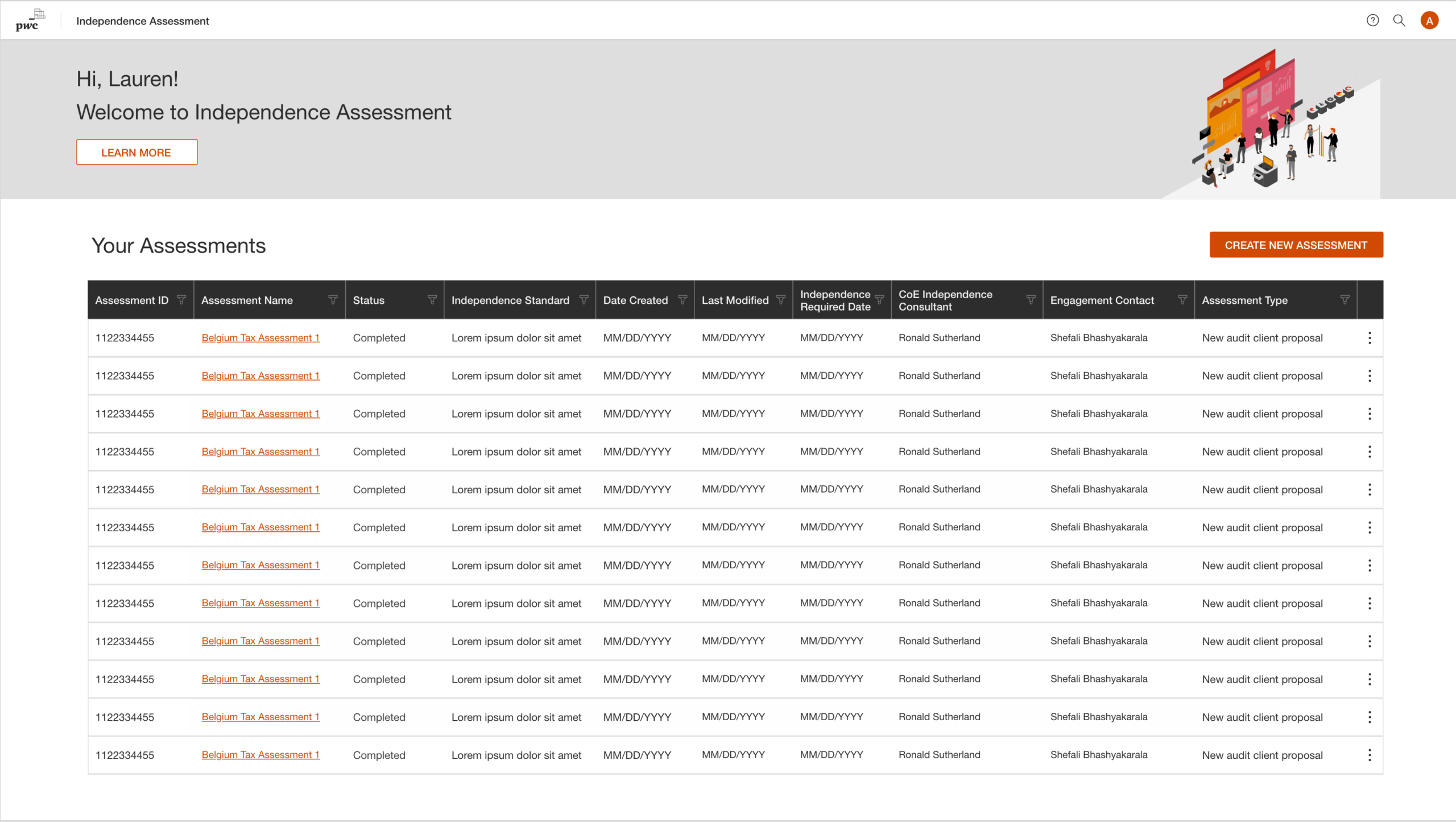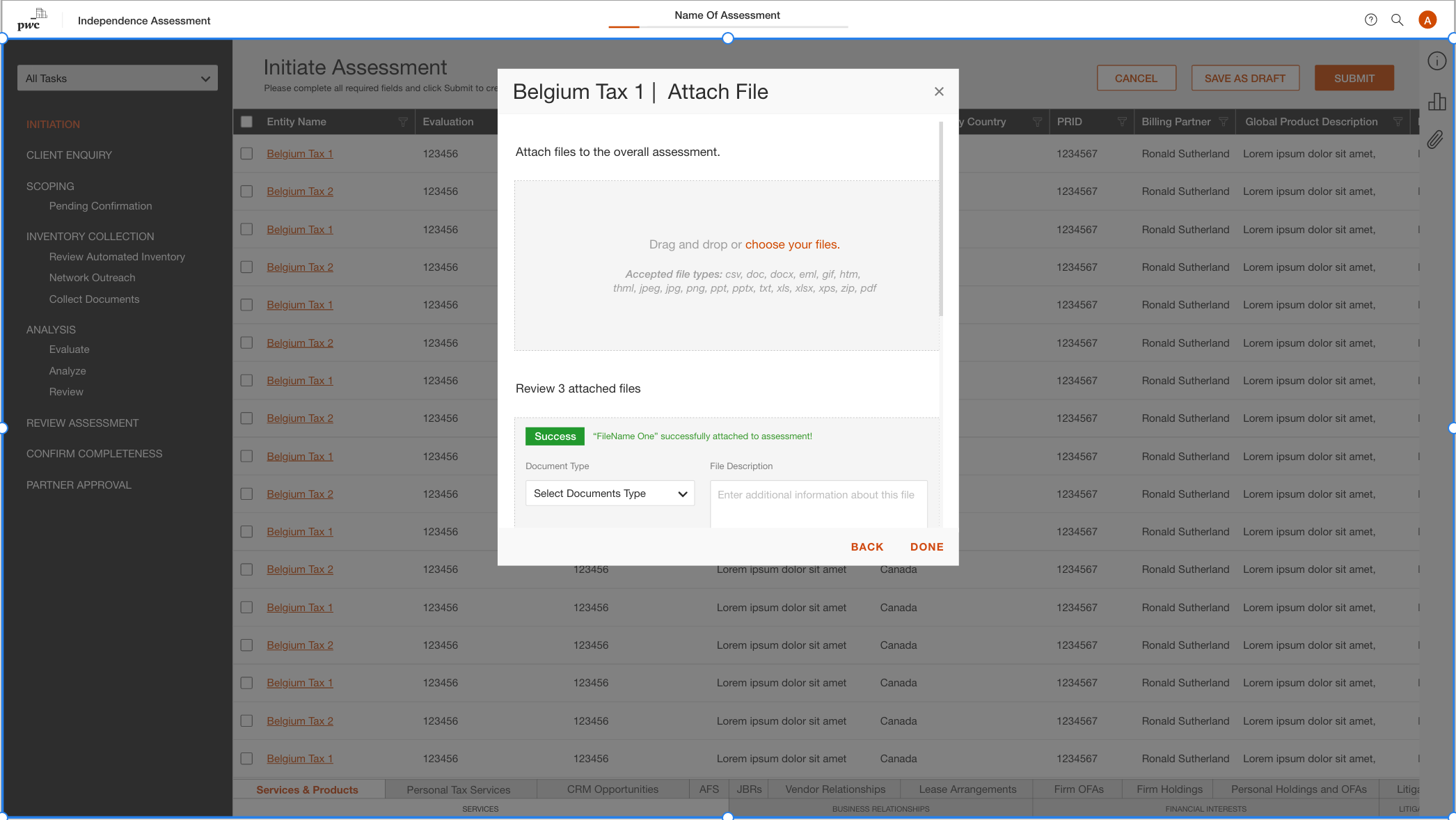UI Design | UX Research | UXUAT | PI Planning
Sketch | Adobe XD | Invision | Balsamiq | DevOps
Enterprise
Financial | Auditing
During my time in this UI/UX Role for a Big 4 Company, I collaborated with a multidisciplinary team to design and develop an internal web tool tailored for their global team of Independence Assessment Auditors.
One quarter into launch, our platform had already yielded favorable results having enhanced auditor performance efficiency by 30%. A direct result of their now streamlined issue-tracking process, which increased audit accuracy by 20%. Overall this resulted in a 40% reduction in audit assessment delays.
This project was completed in 4 highly collaborative phases.
1. Competitive Analysis & Heuristic Evaluation
 My research process typically begins with light Market Research. In this case, I evaluated the 3 programs most commonly used by this particular team of auditors: Google Sheets, MS Excel and their previous attempt at an internal program built using the Salesforce platform which had failed to simplify their current process.In our findings we discovered the existing issues in these platforms were, in fact, not so much spreadsheet capabilities but, a lack of Agile tracking and task assignment capabilities. While 2 programs allowed for auditors to tag team members with their questions, they didn’t allow for task assignment or seamless integration with their database.This theme emerged consistently throughout testing our initial design iterations.
My research process typically begins with light Market Research. In this case, I evaluated the 3 programs most commonly used by this particular team of auditors: Google Sheets, MS Excel and their previous attempt at an internal program built using the Salesforce platform which had failed to simplify their current process.In our findings we discovered the existing issues in these platforms were, in fact, not so much spreadsheet capabilities but, a lack of Agile tracking and task assignment capabilities. While 2 programs allowed for auditors to tag team members with their questions, they didn’t allow for task assignment or seamless integration with their database.This theme emerged consistently throughout testing our initial design iterations.

Heuristic Evaluations are often conducted as a quick assessment of identifiable issues and foreseeable issues as well as WCAG best practice violations. These were then organized thematically through a card sort with all teams involved. After this jam session, UX presented solutions, which PO either approved or refined and finally, the Solutions Architect addressed any gateway access issues we may encounter. Once Evaluated, and the team is fully aligned on all viable solutions, we then move forward with final designs.
Through numerous rounds of wire-framing & collaborations, our multidisciplinary team worked tirelessly to deliver a Phase 1 MVP. We used a DevOps/Agile environment to design navigation structures & optimize information hierarchies for this complex web application. Aside from building hi-fi prototypes, my role required active participation in sprint planning, daily stand-ups, dev handoff and UX workshops for PO to review designs & user flows.
Finally, we put these screens in front of users for moderated test sessions – some in-person and some via teams. Users were chosen from pwc’s pool of global auditor teams, and all these tests were conducted in a casual, conversational manner to get a good gauge on the exact problems our users faced with each micro interaction. Each Sprint revealed new problems we sought to resolve through an iterative design process.
(with dummy content)

What agents see after they login in.

The assessment initiation process begins with agents filling & submitting the form on this screen.

The modal popup users see when migrating existing entity data into our new platform.

Agents assess the scope of inventory collections before sending for partner approval. They select in-scope items on this screen.

In case of missing scope items, user can add new scopes by clicking 'Add New' from the Attach section of the right panel.

Before marking as complete, teams must perform, review & report their Entity analysis. All status updates and errors are marked in green, yellow, red or black text with tagging & commenting capabilities to ensure resolution prior to documentation.